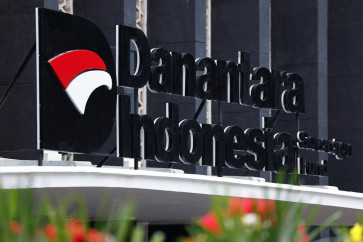Popular Reads
Top Results
Can't find what you're looking for?
View all search resultsPopular Reads
Top Results
Can't find what you're looking for?
View all search resultsData services will drive up operators revenue in 2013
Even though profits from call services will remain the primary income for mobile operators, data services will lead to higher revenues this year as smartphone users ramp up their data consumption, analysts say
Change text size
Gift Premium Articles
to Anyone
E
ven though profits from call services will remain the primary income for mobile operators, data services will lead to higher revenues this year as smartphone users ramp up their data consumption, analysts say.
Nitin Bhat, partner and head of consulting at Frost & Sullivan, said that Indonesia was a “unique” market because it was a predominantly voice market, thanks to the low voice tariffs set by operators.
“Indonesia, alongside India, is among the countries with the world’s lowest voice tariffs in which outgoing calls cost around 1 US cent,” he said recently.
Bhat added that voice remained essential for operators because voice transmission over telecommunication networks cost operators less than data transmission.
Thus, operators must still focus on inducing voice usage among their subscribers, he said.
“Yet, data will be the [revenue] growth driver in the future,” he said, adding that the Indonesian market was in the early to middle stage of data usage increase.
Based on Frost & Sullivan data, Indonesia’s mobile service revenue hit Rp 134.5 trillion (US$ 13.9 billion) in 2012, with 61.8 percent of revenue derived from voice services and the remaining 38.2 percent coming from non-voice or data services.
In the first nine months of 2012 alone, leading mobile operator PT Telekomunikasi Selular reported revenues of Rp 39.8 trillion while market runner-up, PT Indosat (ISAT) earned Rp 16.5 trillion.
This year, Frost & Sullivan estimates that overall mobile revenue will grow by 11.3 percent to Rp 149.7 trillion, 40.7 percent of which will come from non-voice services.
Bhat pointed out that the increasing popularity of smartphones contributed heavily to the growing data revenues.
Frost & Sullivan data shows that mobile phone penetration will go to 80 mobile phones per 100 people in 2013 from nearly 74 mobile phones per 100 people last year.
Meanwhile, smartphone penetration will exceed 50 percent in 2015 from 9 percent in 2012.
Bhat added that the tiered data plans, in which heavier data users pay more, has been a “major advantage” to Indonesian operators by allowing operators to “maintain profitability”.
However, mobile data services have nevertheless become more affordable. In 2012, 1 gigabyte of mobile data service cost roughly $10 and this year, the cost is predicted to reduce down to $2.5, Frost & Sullivan data shows.
Bhat added that the profits seen by Indonesian operators were a contrast to operators in countries who offered unlimited data usage at flat rates.
As a result, they saw average revenue per megabyte decline, given that low and intense data users paid similar fees.
Bhat added that, with data usage among subscribers on the rise, operators were working on providing additional services other than simply data connection to avoid becoming a “dumb pipe”.
Operator revenues may be up this year, but the growth is predicted to be 10.8 percent, lower than the 16.6 percent growth experienced last year, say analysts at Frost & Sullivan.
According to Bhat, adjacent services that operators could delve into include smart electricity meters, freight and fleet management as well as connected cars.
Major operators in Indonesia are trying their hand at smart meters, with most having launched e-wallet and mobile payment services. Telkomsel has their T-Cash program while PT XL Axiata (EXCL), the third largest operator, has XL Tunai.
“Indonesia is entering the phase in which the monetization of networks is critical,” Bhat said.










